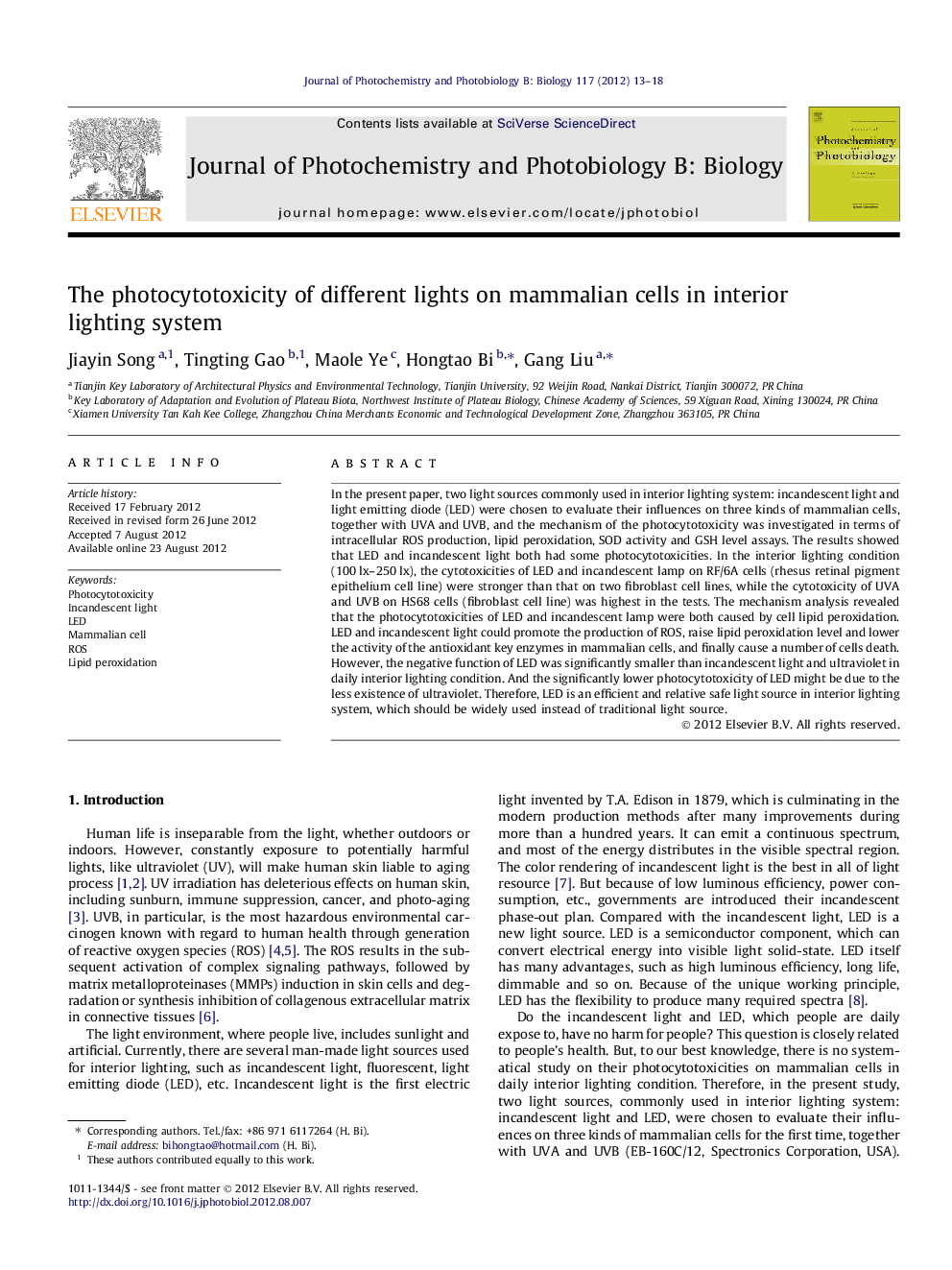| Article ID | Journal | Published Year | Pages | File Type |
|---|---|---|---|---|
| 30648 | Journal of Photochemistry and Photobiology B: Biology | 2012 | 6 Pages |
In the present paper, two light sources commonly used in interior lighting system: incandescent light and light emitting diode (LED) were chosen to evaluate their influences on three kinds of mammalian cells, together with UVA and UVB, and the mechanism of the photocytotoxicity was investigated in terms of intracellular ROS production, lipid peroxidation, SOD activity and GSH level assays. The results showed that LED and incandescent light both had some photocytotoxicities. In the interior lighting condition (100 lx–250 lx), the cytotoxicities of LED and incandescent lamp on RF/6A cells (rhesus retinal pigment epithelium cell line) were stronger than that on two fibroblast cell lines, while the cytotoxicity of UVA and UVB on HS68 cells (fibroblast cell line) was highest in the tests. The mechanism analysis revealed that the photocytotoxicities of LED and incandescent lamp were both caused by cell lipid peroxidation. LED and incandescent light could promote the production of ROS, raise lipid peroxidation level and lower the activity of the antioxidant key enzymes in mammalian cells, and finally cause a number of cells death. However, the negative function of LED was significantly smaller than incandescent light and ultraviolet in daily interior lighting condition. And the significantly lower photocytotoxicity of LED might be due to the less existence of ultraviolet. Therefore, LED is an efficient and relative safe light source in interior lighting system, which should be widely used instead of traditional light source.
► The photocytotoxicity of interior lighting on mammalian cells was investigated. ► Interior lighting could raise lipid peroxidation level in mammalian cells. ► Interior lighting could promote the production of ROS in mammalian cells. ► Interior lighting could lower the activity of the antioxidant key enzymes in mammalian cells. ► The photocytotoxicity of LED was identified to be much weaker than incandescent light.
